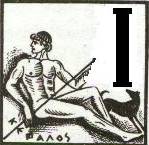


The island has no unified history until the 10th century A.D., when they were made a province of Byzantine Empire. Venice took the islands in the 14th and 15th century and held them until 1797, when the Treaty of campo Formio, which ended the Venetian republic, gave the island to
Angelo, Dionisios Debonou
Ionian Island 1953 Earthquake
When looked at with our modern understanding of why the earth moves, earthquake myth may seem humorous and inconsequential. But they were once standards of their various cultures, a way of trying to understand the powerful natural events that could so greatly affect the lives of ancient people.
Earthquake myths evolved in virtually all cultures and reflect unique and interesting percptions of the shifting crust. And in spite of all advances scientist have made in beginning to understand the reasons of earthquakes, modern myths exist that still capture the imagination of many,
France. In 1799 they were seized by a Russo-Turkish fleet and were constituted a republic under Russian protection. In 1807, by the Treaty of Tilsit, Russia returned theislands to France. From 1809 to 1814 the British navy occuppied all the islands except Kerkira. In 1815 the Ionian Islands , known as the " UnitedStates of Ionian Islands," were placed under British protection. The British ceded the islands to Greece in 1864 after considerable popular agitation on the islands. A series of earthquakes in 1953 caused extensive damage to the island.
Ancient Myths
Ancient Greece
Thales of Miletos (6th century BC) beleived an agitation of the great sea on which the earth floats, produced earthquakes. But the nation that the movement of air in subterrestrial chambers created earthquakes formed the basis for the most elaborate theories of ancient times.
Other earthquake myth and modern folklore